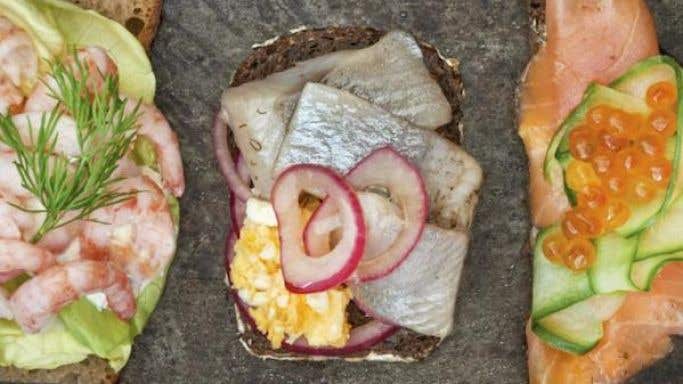A version of this article is published by the Financial Times.
For the many British workers whose daily commute is into and out of Victoria station, the choice of restaurants in the area has to date been bleak. Until recently, that is.
Two high spots for me at least were the very British menu on offer at The Goring Hotel to the north and Andrew Wong’s exciting Chinese cooking at A Wong on Wilton Road to the south.
But the opening of the first nine of the 17 restaurants planned for Nova London, a new development of offices and residential accommodation, changes all that.
There is coffee and sandwiches at Sourced Market; wine and food on offer at Vagabond Wines; burgers and frozen custards at Shake Shack; pizza at Franco Manca; fast and casual eating and drinking available at the Rail House Café and Greenwood, the latter with a sports bar, long missing in the capital; and even a couple of celebrity chefs. Jason Atherton turns his hand to ‘New York-style Italian food’ at the ridiculously named Hoi Cenato? (Italian for ‘Have you eaten?’). More focused is Helena Puolakka’s shorter menu at Aster, which highlights the Scandinavian food of her childhood in Finland allied to the French technique she learnt working under Pierre Koffmann.
As with so many seemingly instant transformations, the creation of Nova has been long in the planning, stretching back 12 years according to David Atcherley-Symes, the retail director of Land Securities, who control so much of Victoria. That was the era when the site next door, known today as Cardinal Place, was in the planning, a process that created large square box-like spaces, highly suitable for shops.
When Nova followed, five years ago, the same principles did not apply. There are a lot of corner sites. Most of them have a front door at ground level but an equally large, if not larger, space on the first floor – a combination that does not make them particularly attractive to even the bravest of restaurateurs. And most of them are large, a factor that, combined with the stringent requirements of Westminster Council and particularly its environment health department, adds considerably to start-up costs.
These factors have all contributed to one element that is common to all of Nova’s restaurateurs: they all belong to well-financed large companies rather than smaller, independent operators. This phenomenon is acknowledged by Atcherley-Symes. It is a pity but undoubtedly for the best. He recognises the high fit-out costs as well as the presence of builders on site long after they should have left, factors that only the better-established companies can weather.
Several journeys to Nova revealed one other aspect of a development on such a scale and one inescapable fact of eating out today.
The first is the huge difference in how the respective interior designers have chosen to treat their allocated space, while the second is the overriding importance of the presence of the chef on the premises.
At Hai Cenato the treatment of the ground and upper floors has been simplified with the bar confined to upstairs, and the eating area, supplied from a large, open kitchen, downstairs.
My hackles were raised by the largely illegible menu, which correctly introduces colour into the menu headings, but otherwise uses a script that is barely legible. It was only back at my desk that I realised that what I took for the number 3 opposite the homemade sea-salt focaccia was in fact an ampersand.
Then there is the issue of what constitutes New York Italian cooking? My memory of it, other than of red and white checked tablecloths, is of copious amounts of food and wine, all served at relatively low prices by waiting staff with smiles all over their faces.
This is certainly not the case here, where the menu consists of small plates, pasta dishes, pizzas (even one created by a guest chef despite the restaurant only having been open a couple of months) and a section entitled ‘grill, sharing and specials’ of main courses that range from £22.50 to £32 per person (side dishes are £5 each).
We shared a pizza and then settled for spring pea and bean risotto and corzetti, a circular pasta from Liguria, with an aged beef Bolognese. Both were inappropriately served on dishes rather than in bowls and both were intrinsically flawed: the risotto too heavy and too thick while the sauce of the pasta dish made the whole dish taste bitter. Atherton, in my opinion, needs to spend a lot more time in this kitchen.
While Aster has all the hallmarks of a restaurant operated by D&D, obvious in a smart interior and even smarter staff uniforms, it is probably what has been spent behind the swing door that is most impressive. There are separate kitchens on each floor to accommodate the café and the restaurant upstairs as well as the crowds that will fill these spaces once the musical Hamilton opens next door in the Palace Theatre.
And here is a chef with a particular, and distinctive, style of cooking (see the picture above). First courses were appealingly simple: Nordic fish roes with potato blinis and sour cream and cured salmon topped with a lacy potato crisp, cucumber and salmon roe. Our main courses were more complicated. Arctic char came with Greenland prawns and dill, while halibut complemented by well-seasoned roast salsify, cauliflower and capers was equally good – almost as good as the side dish of creamy truffled potato for £3.50.
Nova London www.createvictoria.com

